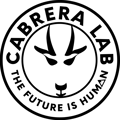B overall rating; simple, useable; some great features and one of the best cognitive architectures out there; Biggest downsides: No P; No RDS; UI feels like 1980's; some layout challenges

Thortspace has sooo much potential, but it falls short of it by a lot. The software itself I would give a C+ but the possibilities that it has in terms of becoming truly excellent make it a B or B+. It is ugly and feels like you're in the 1980s. But it is one of only two softwares on the market that is truly fractal! What this means is that what it lacks in features and UI design (and it lacks greatly) is not prohibited by its existing cognitive architecture. That's a pretty nerdy, scientific way of giving Thortspace a tremendous compliment. In other words, Thortspace's flaws, are not tragically structural (as are most of the flaws in other softwares), but mostly superficial. I big part of this is that Thortspace has already figured out the fractal part-whole issue (if it allowed groups within groups). Graphically, its a little clunky and the fact that "thorts" (I didn't get the name until I heard the narrater say thought! lol) have to be geographically together to be part of the same group leads to all kinds of missed opportunities for better layouts.There's no RD or RDS, but the relationships are mostly fractal also (its missing self relations and relations to relations). There's also no perspective, but there's nothing about the cognitive architecture or the UI that wouldn't support it and the "faux 3D" feel may actually enhance it. Thortspace does includes a remarkably simple UI of doing S of R (which no other software we know of does) and has also found a genius way to do part-whole grouping structurally but also across structures using a feature that is unfortunately mislabeled as "categories." Regarding the latter feature, if a thort could become a group [fractally] it would make Thortspace's Spw functionality truly fractal. The UI, as I said, has much to be improved. The relationships are simply horrendously bulky and over bearing with an ambiguous "arrow;" the icons are bulky and dated; the trays are big and bulky and over colored; the background cloud image brings on past PTSD from Microsoft's blue screen of death era. But, at the end of the day, Thortspace finds a way, despite its quirks, to be one of the best systems mapping softwares out there.
| Systemic Features | Description | Thortspace |
| OVERALL RATING | B | |
| Di | The ability to identify objects (cards, shapes, etc) | Y |
| Dio | The ability to contrast identities with others (antonym networks, etc) | N |
| R | The ability to make relationships between identities | Y |
| Rar | The ability to create action reaction variables at terminal ends of relationships | N |
| Self R | The ability to relate identity to self | N |
| RD1 | The ability to label (distinguish) relationships | N |
| RD2 | The ability to create the same type of identity/object on a relationship as anywhere else | N |
| RDS | The ability to create a systematized set of part-whole identities on a relationship | N |
| R confusion | A condition where relational lines are confused with part-whole belonging/containment (should be No) | N |
| Spw | The ability to create part-whole systems | Y (n=3) |
| Nesting (Spw) | The ability to nest part inside parts inside parts | Y (n=3) |
| Prefab Perspectives | A feature in which a map can be viewed from different pre-determined perspectives (e.g., assignee, scheme, etc) | Y/N |
| Ppw | The ability to take point-view Perspectives | N |
| Perspective annotation | The ability to annotate perspectives | N |
| Full blown P taking | The ability to see how a map changes from any given identity in the map | N |
| Fractal D | The ability to create identities (cards, shapes etc) at any level anywhere in map as a universal simple rule/function | Almost |
| Fractal S | The ability to create hierarchical structures (part-whole nestedness) at any level anywhere in map as a universal simple rule/function | Almost |
| Fractal R | The ability to relate anything to anything else at any level anywhere in map as a universal simple rule/function | Almost |
| Fractal P | The ability to see the system from any identity/node in the system at any level anywhere in map as a universal simple rule/function | N |
| Fractal DSRP | The ability to operate at D,S,R, or P function on any D,S,R,P object | N |
| Other non-cognitive features | Other cool features like zoom, cut and paste, layout, templates, etc | Y |
| Other social features | Other cool features like synchronous mapping, sharing, commenting, etc. | Y |
| Aesthetic | The aesthetic is elegant, simple, clean, etc. | Ugh. |
| Clean Code | The code isn't wonky or buggy | Y/N |
| Modeling | The ability to do some form of modeling (e.g., "press run" modeling) | N |
